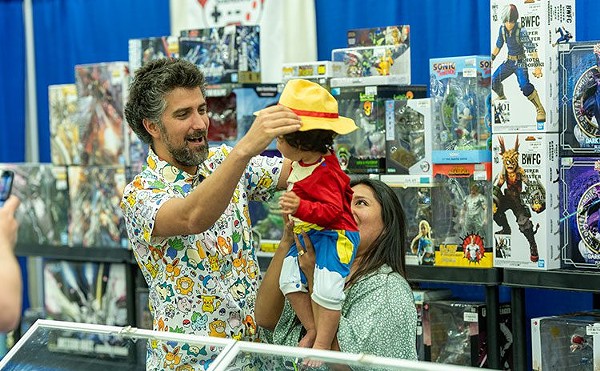We’re going to do it. You can’t stop us, and you don’t really want to. Food styling!
Culinary professionals all over the world (and amateurs, too) are fixated on making food photos look luscious, inviting and perfect. As technology improves on an ascending curve, it’s easier than ever for everyone to do. So I’m inviting you to come down on one side of the fence or the other: Should images of food be manipulated like the airbrushed models on fashion magazine covers? Or should they be as candid as the mug shots in Crime Times?
Personally, I come down forthrightly in the middle: “It depends.” It depends what the image is going to be used for. Is it for advertising? Then let’s make that shit look like Martha Stewart’s art director teased each blade of fennel frond with a pair of micro chopsticks and a tiny curling iron so they’d somehow look entirely random and yet as artistic as an old master. Or is the shot destined for a Twitpic feed documenting your Sunday night Hungarian goulash? Don’t bother. As a matter of fact, please don’t photograph Hungarian goulash, ever. It looks kind of like albino night crawlers and dog food with tomatoes. But yes, please, I’d still like to come over for some. On second thought, why are we being subjected to visuals of your Sunday night Hungarian goulash? Classic example of over-sharing.
Once on Facebook, in response to the question “What do you want to be when you grow up?,” I answered “a food stylist.” My friend Bec from Brisbane, Australia, wanted to know what a food stylist does. As soon as I began to explain, she said, “I hate you people. You’re the reason I put on shoes in the middle of the night and drive like a zombie to buy a chicken sandwich — which looks like someone stepped on it when I unwrap it at home.”
Well, guilty as charged, I suppose. You can’t single out culinary marketeers for gilding the visual lily, though. Seen any automobile commercials lately? Notice how the fresh raindrops bead up in formation on their shiny flanks, or how the tires angle just so as they drift to a stop in the center of the frame? It’s the sin of advertising. Consumers don’t want to see that Lexus lurching to a stop at a blinking red light with a dead leaf stuck under the windshield wiper. And you don’t want to discover that Christina Aguilera has cellulite while you’re watching her latest perfume ad, though it might secretly please you to know that she’s aging right along with the rest of us.
To be fair, some food styling is extreme. Mashed potatoes and ice cream alike are often faked for the camera with scoops of shortening or lard. Those lights are hot, and there’s only so much half-melted ice cream and cold mashed potatoes a photo shoot crew can be fed (and even less shortening, although in my experience they’ll eat a surprising amount if it’s on a bet). And it can be excruciatingly painful to wait while a food-styling prima donna superglues sesame seeds with tweezers, one by one, to a shoe-polish spritzed hamburger bun sitting atop plastic lettuce leaves and a felt hamburger patty that’s been brushed with pancake syrup to make it shine.
Still, advertising serves a purpose. Though it may be nefarious, I’ll cut it some slack. I’m less likely to be patient while you take Instagram photos of your fish and chips at the local watering hole. Please acquaint yourself with the awesome YouTube video “Eat It Don’t Tweet It,” a collaboration of American Hipster and Key of Awesome.
Alas, chefs, cooks and culinary marketing and public relations agents join every commercial promoter in the same boat: Products must appear irresistible. Western society buys into it, and we consumers encourage it hundreds of times daily when we expect beautiful, perfect images of the products we shop for. I’m convinced this trend can never be reversed; it’s more likely to deepen. Let’s organize protests against gorgeous images of food in advertising, said no one, ever.
Shakespeare had it all figured out 500 years ago in “King John”: “Nay, but make haste; the better foot before.” Food stylists are putting their best sesame seed forward. And we love it.
Marsha Lynch has worked at many Louisville independent restaurants including Limestone, Jack Fry’s, Jarfi’s, L&N Wine Bar and Bistro and Café Lou Lou. She now works for her alma mater, Sullivan University, as sous chef of Juleps Catering.





